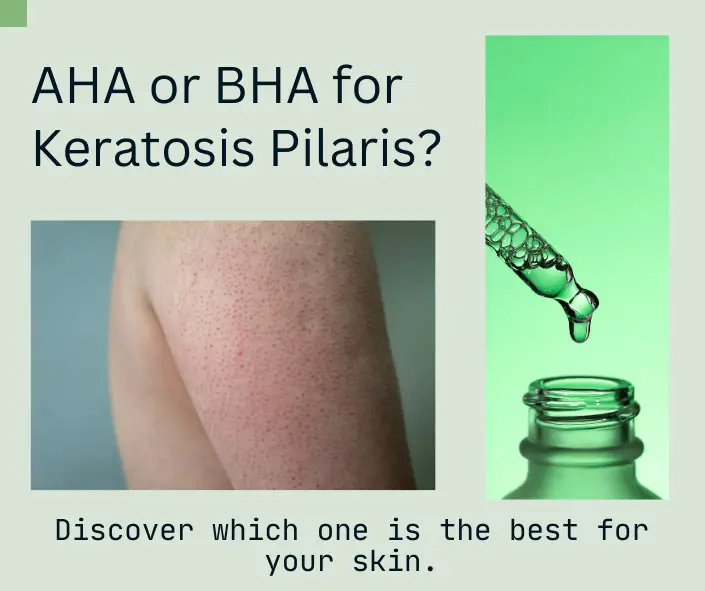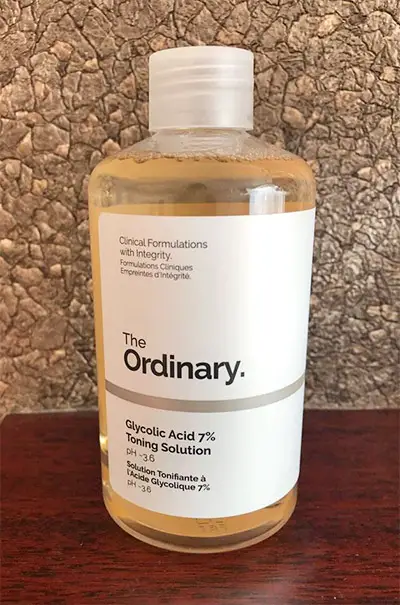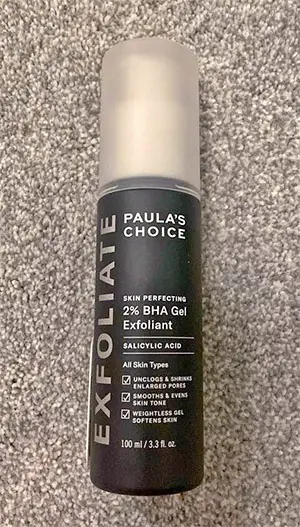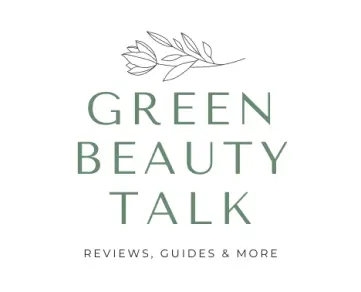
Dealing with Keratosis Pilaris (KP), or as many know it, ‘chicken skin’, can be a real hassle, right? Those tiny, rough bumps that show up mainly on your arms or thighs are actually due to excess keratin blocking your hair follicles.
While KP is harmless, it’s totally understandable if you’re looking for ways to smooth things out. This is where Alpha Hydroxy Acids (AHAs) and Beta Hydroxy Acids (BHAs) come into play. They’re the skincare heroes many turn to for help.
In this article, we’re diving into how AHAs and BHAs work against KP, comparing their strengths and helping you figure out which one might be your skin’s best friend.
Understanding Keratosis Pilaris
Keratosis Pilaris (KP) is all about those tiny, rough bumps you often see on arms and thighs. They pop up when keratin, a skin protein, builds up and blocks hair follicles. It’s super common, affecting about 40% of adults worldwide.
Dermatologists say KP is mostly harmless, just sometimes annoying in how it looks or feels. So, if you’re part of the KP club, you’re definitely not alone!
Deep Dive into AHAs and BHAs
Let’s break down AHAs and BHAs, the skincare all-stars for smoother skin. AHAs (Alpha Hydroxy Acids) are water-loving acids that gently exfoliate the skin’s surface, tackling dullness and uneven texture. Think of them like your skin’s wake-up call for a brighter, fresher look. Common AHAs include glycolic and lactic acid.

BHAs (Beta Hydroxy Acids), on the other hand, are oil-savvy. They dive deep into pores, making them champs at fighting acne and oiliness. Salicylic acid is the go-to BHA, known for its deep-cleansing superpowers.

Both AHAs and BHAs give your skin a rejuvenation boost, but they do it in their unique ways. And yep, they’re found in tons of skincare products, from toners to serums!
AHAs for Keratosis Pilaris
When it comes to easing those bumpy KP textures, AHAs have a special role. They work by gently exfoliating the skin’s surface, helping to reduce the buildup of keratin that causes those pesky bumps. Essentially, AHAs can help smooth out the rough texture that KP brings.
Research backs this up, showing that AHAs, especially glycolic acid, are effective in treating KP. These studies highlight how regular use of AHAs can significantly improve skin texture and appearance.
In terms of products, look for ones with glycolic or lactic acid. Concentrations between 5% and 10% are a good starting point for most, but if your skin’s a bit more sensitive, start lower and see how it goes. Remember, consistency is key when using AHAs for KP.
BHAs for Keratosis Pilaris
BHAs step into the KP game with a slightly different approach. Being oil-soluble, they go deeper into the pores, helping to clear out the excess keratin that leads to those rough, bumpy patches. It’s this deep-cleansing action that makes BHAs, like salicylic acid, a good option for KP management, especially for those with oilier skin.
Scientific studies show that BHAs can be quite effective in reducing KP’s appearance. They work by not just exfoliating the surface but also by unclogging hair follicles, which is essential for tackling KP.
In terms of product choices, salicylic acid is your BHA hero. You’ll find it in various skincare products designed for exfoliation and acne treatment. For KP, formulations with 1% to 2% salicylic acid are usually effective, but as with any skincare product, it’s best to start with a lower concentration and see how your skin responds. Remember, gentle and steady wins the race in skincare.
AHA vs. BHA: Which is better for keratosis pilaris?
Choosing between AHAs and BHAs for Keratosis Pilaris? It’s all about your skin type. AHAs are great for drier skin, smoothing out the surface and reducing those rough KP bumps. BHAs go deeper, perfect for oilier skin, and help unclog pores that lead to KP.
Combination Treatments: In some cases, a combination of AHAs and BHAs can be effective. This approach allows for both surface-level exfoliation and deeper pore cleansing. This can be especially effective for those who have KP along with other skin concerns like acne or oily skin.
In the study published in the Dermatology Research and Practice journal, specific concentrations of AHAs and BHAs were found effective for Keratosis Pilaris.
Specifically, 10% lactic acid, an AHA, and 5% salicylic acid, a BHA, demonstrated significant effectiveness in treating KP. These concentrations provided notable improvements in skin texture and clarity, emphasizing their potential as targeted treatments for this condition.
Another study, published in the Journal of Dermatological Treatment, supports the effectiveness of topical treatments, including salicylic acid (a BHA), in improving KP’s appearance.
The American Academy of Dermatology also highlights the use of products containing glycolic acid (an AHA) and salicylic acid (a BHA) for their exfoliating properties, which can help in managing KP.
In summary, both AHAs and BHAs have their strengths in managing KP. It’s about finding what works best for your skin. And as always, when in doubt, consulting with a dermatologist can provide personalized advice that aligns with your skin’s unique needs.
Safety, Side Effects, and Precautions
Using AHAs and BHAs can be a game-changer for Keratosis Pilaris, but it’s important to use them safely. Both can cause skin irritation, dryness, and increased sensitivity to the sun. Especially with higher concentrations, they can be a bit too strong for sensitive skin.
To keep things safe, start with lower concentrations and gradually increase as your skin adjusts. Always follow the product instructions and maybe do a patch test first. And don’t forget sunscreen! These acids can make your skin more sun-sensitive.
Incorporating AHAs/BHAs into Your Routine
Adding AHAs or BHAs to your skincare routine for KP? Here are some tips:
- Start Slowly: Begin with lower concentrations to see how your skin reacts. Use the product every other day or even just twice a week initially.
- Best Time to Apply: Evening is ideal, as these acids can increase sun sensitivity.
- Patch Test: Always do a patch test first. Apply a small amount on a discreet skin area and wait 24-48 hours for any adverse reactions.
- Gradual Increase: If your skin tolerates the product well, you can gradually increase frequency, but don’t overdo it. Listen to your skin!
- Sun Protection: Since AHAs and BHAs can make your skin more sensitive to sunlight, wearing sunscreen during the day is crucial.
These simple steps can help you safely incorporate AHAs or BHAs into your skincare routine for managing Keratosis Pilaris.
Debunking Myths: KP and Acid Treatments
There are plenty of myths floating around about treating Keratosis Pilaris with AHAs and BHAs. Let’s set the record straight:
- Myth: AHAs/BHAs can completely cure KP.
- Fact: These acids can improve the appearance of KP but can’t cure it. KP is a chronic, genetic condition.
- Myth: The stronger the acid, the better the results.
- Fact: Higher concentrations aren’t always better. Overuse can irritate the skin. It’s about finding the right balance for your skin type.
- Myth: You’ll see instant results with AHAs/BHAs.
- Fact: Patience is key. It can take weeks or even months to see significant improvements.
Understanding these truths, based on scientific understanding of skin health, helps in managing expectations and achieving better, safer results with acid treatments for KP.
In summary, both AHAs and BHAs can be effective for treating Keratosis Pilaris, but the best choice depends on your skin type and the specific characteristics of your KP.

Petra Nakashian (previously Kravos) is a dedicated natural health and beauty blogger, driven by the loss of her parents to cancer, which led her to meticulously research beauty product ingredients. With over 10 years of experience, her in-depth knowledge has made her a trusted expert in the field. Founder of Be Healthy Now and Green Beauty Talk, Petra recently expanded her expertise with Beauty Insights Hub, exploring a wider range of beauty treatments. Committed to transparency and honesty, her work is a vital resource for navigating the complex world of beauty.

